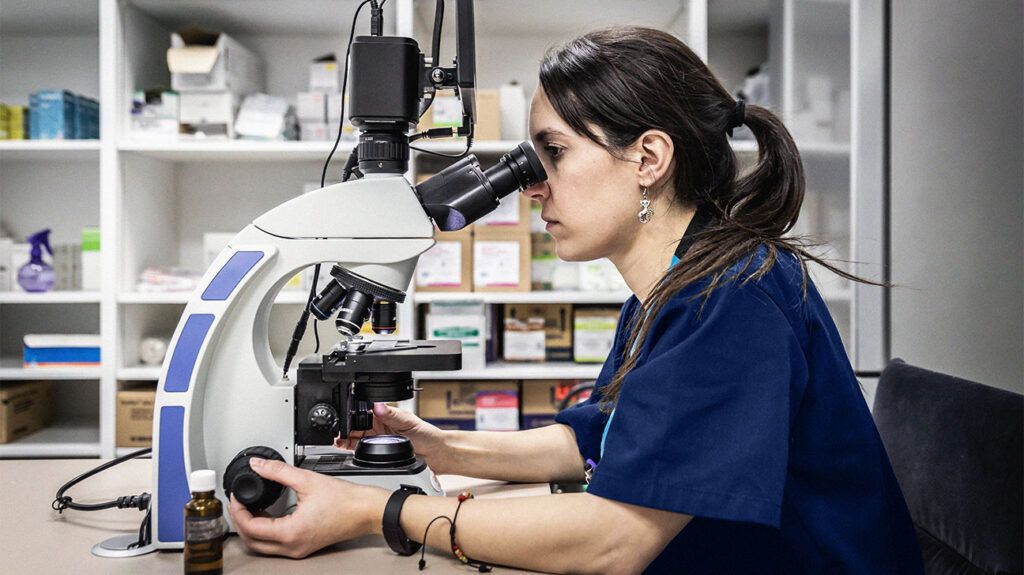Acid lipase deficiency is a rare genetic disorder that affects the lysosomal acid lipase (LAL) enzyme. This enzyme is crucial for managing fat and cholesterol levels throughout the body.
LAL helps break down fats so that they do not reach toxic levels. When certain fats accumulate within the body, they can build up in the liver and other vital organs, causing a range of symptoms and complications, including liver disease.
When LAL does not function effectively, it causes Wolman disease or cholesteryl ester storage disease (CESD). Wolman disease is the most severe form because LAL is completely missing from the body or does not work at all. With CESD, LAL works a little but is not fully functional.
Read on to learn more about acid lipase deficiency and how doctors treat it.

Acid lipase deficiency is an inherited condition, and a person has to have two faulty copies of the lysosomal acid lipase (LIPA) gene to develop it.
The LIPA gene is responsible for the production of the LAL enzyme. LAL
When fats and cholesterol accumulate in areas where they should not be, they can also cause permanent damage to the brain, nervous system, and other organs, including the liver.
LDL cholesterol plays an important role throughout the body, such as maintaining cell membranes, it only becomes harmful when it reaches excessive levels.
There are two types of acid lipase deficiency: Wolman disease and CESD.
Wolman disease
Wolman disease is the most severe form of acid lipase deficiency. According to the
NINDS also indicates that it is rare for an infant with Wolman disease to live past 12 months of age.
CESD
People with CESD have some LAL function and can break down fats and cholesterol to some extent, albeit in smaller amounts. What makes CESD different from Wolman disease is the extent of enzyme activity. With Wolman disease, there is no LAL activity at all, making it more dangerous than CESD.
According to NINDS, children with CESD may have enlarged livers and jaundice, among other symptoms and complications. Some children can live into adulthood, and eating a low cholesterol diet can benefit their health.
Symptoms differ between children and adults with acid lipase deficiency.
In infants, acid lipase disease may present as:
- not gaining weight or growing
- enlarged abdomen
- persistent diarrhea
- persistent vomiting
- jaundice
Adults or older children who have lived with undiagnosed acid lipase deficiency for a while may go on to experience the following symptoms and complications:
- easily bruising and bleeding
- jaundice
- ascites, which may present as a swollen and painful abdomen
- liver fibrosis
- cirrhosis
- stroke
- heart attack
Acid lipase deficiency is a recessive genetic condition, which means both parents must carry faulty copies of the LIPA gene for their child to potentially develop it. If a person has one healthy copy of the LIPA gene, it is unlikely they will ever experience symptoms.
When both parents contain a faulty version of the LIPA gene, there is a 25% risk of their child developing an acid lipase deficiency.
When a doctor suspects an infant or adult has acid lipase deficiency, they
If a person has high levels of cholesterol and fats, the doctor may recommend they undergo a genetic test to see if the LIPA gene has two faulty copies.
However, an acid lipase deficiency diagnosis may take months or years due to its rarity and because it shares symptoms with other conditions. In addition, people may not notice any symptoms until the condition progresses.
The drug sebelipase alfa (Kanuma) addresses the underlying cause of acid lipase deficiency, which is non-functioning or faulty LAL.
Sebelipase alfa is a type of enzyme replacement therapy and can treat all ages.
According to the American Liver Foundation, infants can receive it within the first 6 months of life. Doctors administer it intravenously once a week. Children and adults receive treatment every other week. The treatment course is indefinite, meaning a person will likely need weekly treatments for the rest of their life.
Some people respond to sebelipase alfa better than others, and common side effects in adults and children include:
- constipation
- headache
- nausea
- fever
- inflammation of the throat and nasal passages
Side effects in infants may include:
- fever
- cough
- runny nose
- diarrhea
- vomiting
- hives
Some people have also reported severe allergic reactions. For this reason, healthcare professionals administer the medication in a medical setting.
Before this drug, there were only supportive therapies. These therapies treat symptoms but not the underlying cause and include:
- taking lipid-lowering medications, such as statins
- making lifestyle changes, like adopting a low fat diet
- stem cell transplant
- liver transplant
A person’s outlook may vary depending on the type of acid lipase deficiency they have, as well as how early they receive a diagnosis and treatment.
Without prompt and successful hematopoietic stem cell transplantation, babies with Wolman disease may not live for more than
People who can receive enzyme replacement therapy have a better survival outcome than those who cannot. Enzyme replacement therapy is life-saving for people with Wolman disease and can prolong survival and quality of life for people living with CESD.
Wolman disease and CESD are types of acid lipase deficiency.
Wolman disease is the most severe type in which the LAL enzyme, which breaks down fats and cholesterol, is either missing or is not functional. With CESD, LAL is functioning but cannot break down fats at a healthy rate.
The main treatment for acid lipase deficiency is enzyme replacement therapy, which targets the faulty LAL enzyme that causes the condition. Other therapies treat symptoms and complications of the deficiency and include statins, other medications, and liver transplants.
People should speak with a doctor if they are concerned they or a child in their care is living with acid lipase deficiency. A healthcare professional can determine the underlying cause of any symptoms and treat them accordingly.
